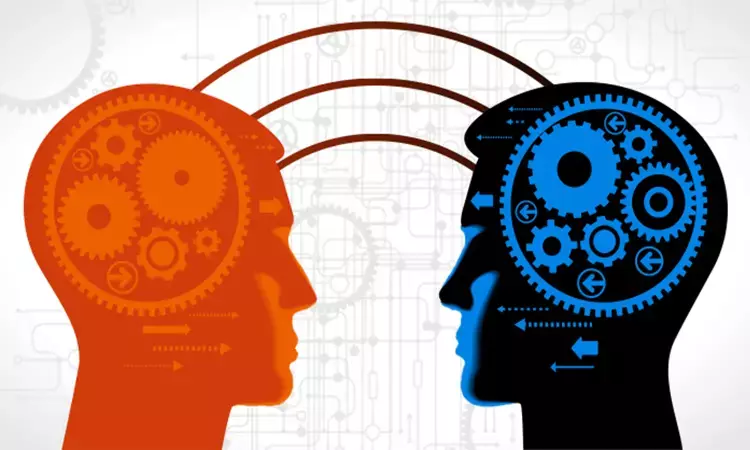- Home
- Medical news & Guidelines
- Anesthesiology
- Cardiology and CTVS
- Critical Care
- Dentistry
- Dermatology
- Diabetes and Endocrinology
- ENT
- Gastroenterology
- Medicine
- Nephrology
- Neurology
- Obstretics-Gynaecology
- Oncology
- Ophthalmology
- Orthopaedics
- Pediatrics-Neonatology
- Psychiatry
- Pulmonology
- Radiology
- Surgery
- Urology
- Laboratory Medicine
- Diet
- Nursing
- Paramedical
- Physiotherapy
- Health news
- Fact Check
- Bone Health Fact Check
- Brain Health Fact Check
- Cancer Related Fact Check
- Child Care Fact Check
- Dental and oral health fact check
- Diabetes and metabolic health fact check
- Diet and Nutrition Fact Check
- Eye and ENT Care Fact Check
- Fitness fact check
- Gut health fact check
- Heart health fact check
- Kidney health fact check
- Medical education fact check
- Men's health fact check
- Respiratory fact check
- Skin and hair care fact check
- Vaccine and Immunization fact check
- Women's health fact check
- AYUSH
- State News
- Andaman and Nicobar Islands
- Andhra Pradesh
- Arunachal Pradesh
- Assam
- Bihar
- Chandigarh
- Chattisgarh
- Dadra and Nagar Haveli
- Daman and Diu
- Delhi
- Goa
- Gujarat
- Haryana
- Himachal Pradesh
- Jammu & Kashmir
- Jharkhand
- Karnataka
- Kerala
- Ladakh
- Lakshadweep
- Madhya Pradesh
- Maharashtra
- Manipur
- Meghalaya
- Mizoram
- Nagaland
- Odisha
- Puducherry
- Punjab
- Rajasthan
- Sikkim
- Tamil Nadu
- Telangana
- Tripura
- Uttar Pradesh
- Uttrakhand
- West Bengal
- Medical Education
- Industry
Study finds artificial intelligence accurately detects fractures on x-rays, alert human readers

A new study has found that artificial intelligence (AI) can help physicians in interpreting x-rays after an injury and suspected fracture.
"Our AI algorithm can quickly and automatically detect x-rays that are positive for fractures and flag those studies in the system so that radiologists can prioritize reading x-rays with positive fractures. The system also highlights regions of interest with bounding boxes around areas where fractures are suspected. This can potentially contribute to less waiting time at the time of hospital or clinic visit before patients can get a positive diagnosis of fracture," explained corresponding Ali Guermazi, MD, PhD, chief of radiology at VA Boston Healthcare System and Professor of Radiology & Medicine at Boston University School of Medicine (BUSM).
Fracture interpretation errors represents up to 24 percent of harmful diagnostic errors seen in the emergency department. Furthermore, inconsistencies in radiographic diagnosis of fractures are more common during the evening and overnight hours (5 p.m. to 3 a.m.), likely related to non-expert reading and fatigue.
The AI algorithm (AI BoneView), was trained on a very large number of X-rays from multiple institutions to detect fractures of the limbs, pelvis, torso and lumbar spine and rib cage. Expert human readers (musculoskeletal radiologists, who are subspecialized radiology doctors after receiving focused training on reading bone x-rays) defined the gold standard in this study and compared the performance of human readers with and without AI assistance.
A variety of readers were used to simulate real life scenario, including radiologists, orthopedic surgeons, emergency physicians and physician assistants, rheumatologists, and family physicians, all of whom read x-rays in real clinical practice to diagnose fractures in their patients. Each reader's diagnostic accuracy of fractures, with and without AI assistance, were compared against the gold standard. They also assessed the diagnostic performance of AI alone against the gold standard. AI assistance helped reduce missed fractures by 29% and increased readers' sensitivity by 16%, and by 30% for exams with more than 1 fracture, while improving specificity by 5%.
Guermazi believes that AI can be a powerful tool to help radiologists and other physicians to improve diagnostic performance and increase efficiency, while potentially improving patient experience at the time of hospital or clinic visit. "Our study was focused on fracture diagnosis, but similar concept can be applied to other diseases and disorders. Our ongoing research interest is to how best to utilize AI to help human healthcare providers to improve patient care, rather than making AI replace human healthcare providers. Our study showed one such example," he added.
These findings appear online in the journal Radiology.
Funding for this study was provided by GLEAMER Inc.
https://pubs.rsna.org/doi/10.1148/radiol.210937
Hina Zahid Joined Medical Dialogue in 2017 with a passion to work as a Reporter. She coordinates with various national and international journals and association and covers all the stories related to Medical guidelines, Medical Journals, rare medical surgeries as well as all the updates in the medical field. Email: editorial@medicaldialogues.in. Contact no. 011-43720751
Dr Kamal Kant Kohli-MBBS, DTCD- a chest specialist with more than 30 years of practice and a flair for writing clinical articles, Dr Kamal Kant Kohli joined Medical Dialogues as a Chief Editor of Medical News. Besides writing articles, as an editor, he proofreads and verifies all the medical content published on Medical Dialogues including those coming from journals, studies,medical conferences,guidelines etc. Email: drkohli@medicaldialogues.in. Contact no. 011-43720751


